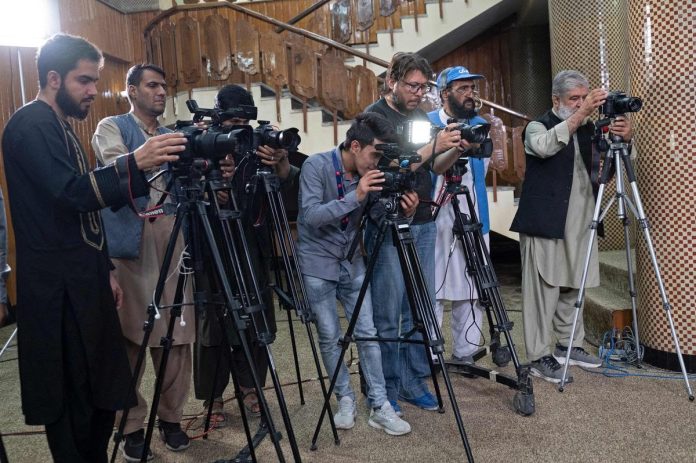The Afghan Taliban’s Ministry for the Propagation of Virtue and the Prevention of Vice (PVPV) has announced the gradual implementation of a new law banning media outlets from publishing images of living beings, including humans and animals. The move is part of the Taliban’s broader enforcement of its strict interpretation of Islamic law, formalized since they returned to power in 2021, reports The Hindu.
Speaking to AFP, PVPV spokesman Saiful Islam Khyber clarified that the law would be applied across Afghanistan but enforced in stages. “The law applies to all of Afghanistan, and we will be working to convince people that images of living beings are contrary to Islamic law,” Khyber stated.
“Coercion has no place in the implementation of this law,” he added, emphasizing that the ministry’s approach would focus on persuasion rather than force.
The new law, which applies to both the public and the media, outlines several restrictions, including the prohibition of publishing images of living things and ensuring that content does not mock or contradict Islamic law. However, some aspects of the law remain unimplemented, such as the advice to the public to avoid looking at images of living beings on electronic devices.
Khyber noted that the enforcement had begun in southern provinces such as Kandahar and Helmand, as well as northern Takhar, while the rest of the country would follow gradually. Journalists in central Ghazni and Maidan Wardak provinces were summoned by PVPV officials, who advised them to reduce filming and photographing living things and to adopt new practices. Media professionals in Afghanistan expressed concerns over the increasing restrictions, which have been sporadically enforced since the Taliban took power.
This marks a return to similar policies seen during the Taliban’s previous rule from 1996 to 2001, when television and images of living beings were banned. Although these restrictions were not immediately reimposed after the Taliban’s return to power in 2021, authorities have enforced selective censorship, such as covering the faces of men and women on advertisements and obscuring fish images on restaurant menus.




